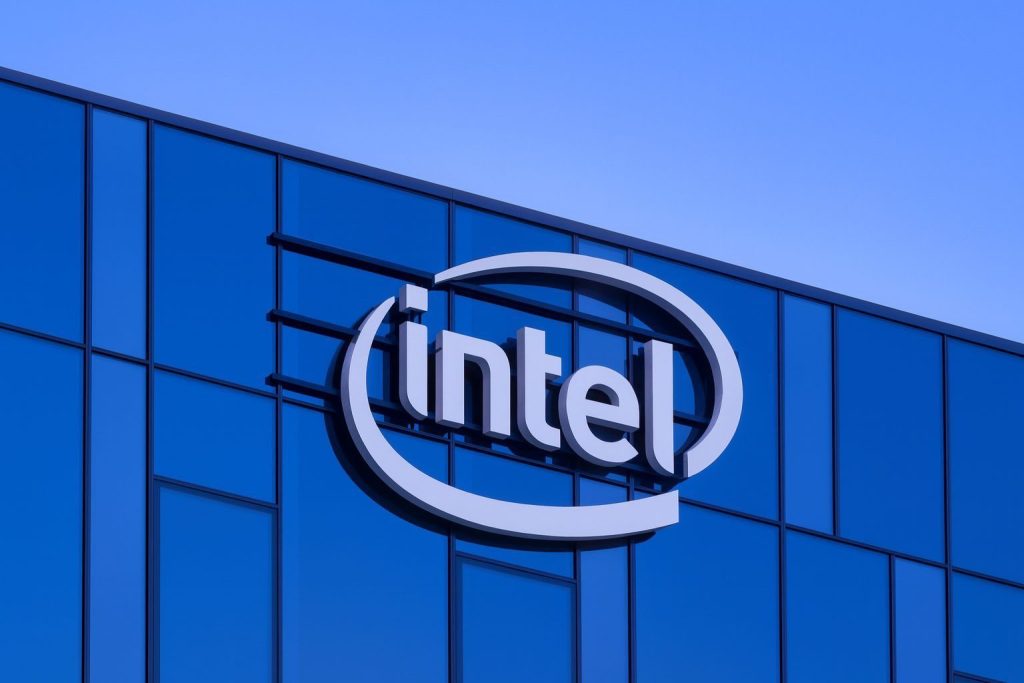Amazon.com, Inc. (NASDAQ: AMZN) is trading slightly higher on Wednesday, November 26, 2025, as investors digest a wave of fresh analyst commentary, insider trading disclosures, regulatory headlines around its drone program, and bullish macro signals heading into the heart of the holiday shopping season.
Amazon stock price today: modest rebound after recent pullback
By mid‑session on Wednesday, Amazon stock is trading around $230 per share, up roughly 0.3% on the day, compared with Tuesday’s close near $229.67. That puts AMZN: [1]
- About 11% below its 52‑week high of $258.60
- Well above its 52‑week low near $161.38
- Only a few dollars above its 50‑day (~$227.6) and 200‑day (~$222.7) moving averages
Over the last five years, Amazon shares are up roughly 43%, according to StatMuse price history, underscoring how the stock has already recovered from the 2022–2023 tech selloff and then some. [2]
At today’s levels, Amazon commands a market capitalization of around $2.45–2.5 trillion and trades at roughly 35× trailing earnings, a valuation that reflects both its dominant position in e‑commerce and cloud computing and the market’s expectations for continued double‑digit growth. [3]
Earnings hangover vs. AWS strength: why AMZN is still below its November peak
Much of the recent volatility in Amazon’s share price stems from investors’ reaction to the company’s third‑quarter 2025 earnings:
- Q3 2025 EPS: about $1.95, handily beating consensus estimates near $1.57
- Revenue: roughly $180.2 billion, above expectations of about $177.5 billion, up 13.4% year‑on‑year
- Net margin: about 10.5%, with return on equity around 23.8% [4]
The real star of the quarter was Amazon Web Services (AWS). Recent coverage notes that AWS revenue grew 20.2% year‑over‑year in Q3, up from 17.5% growth in the prior quarter, with a $200 billion backlog growing about 22% annually. [5]
Yet despite these strong numbers, AMZN sold off after earnings and has since traded roughly 10% below its early‑November highs. Analysts and market commentary point to several reasons: [6]
- A $15 billion multi‑tranche bond offering, which raised questions about rising leverage and aggressive capital spending on AI infrastructure
- Investor concern that massive AI and data‑center investments may pressure free cash flow in the near term
- Competitive anxiety around AI, as rivals like Microsoft, Nvidia and others deepen their own partnerships and infrastructure bets
Still, JPMorgan’s Doug Anmuth and other bullish analysts have framed the post‑earnings pullback as an opportunity rather than a warning sign, arguing that the bond issuance is small relative to Amazon’s scale and that AWS growth should accelerate again by 2026. [7]
Wall Street today: “Moderate Buy” consensus with 20–30% upside
Fresh analyst calls on Nov. 26, 2025
Several new and recent research notes are shaping sentiment around Amazon today:
- JPMorgan reiterates Overweight with a $305 price target, keeping Amazon as a top pick even after the stock slipped back to pre‑earnings levels. The firm emphasizes AWS’s reaccelerating growth and downplays concerns about the $15 billion debt issuance. [8]
- BNP Paribas Exane has just initiated coverage on AMZN with an Outperform rating and a $320 price target, arguing that worries about under‑investment in AI are “overblown” and that Amazon remains a leader across cloud, e‑commerce and advertising. [9]
- A Zacks “Investment Ideas” feature highlights Amazon as one of the main beneficiaries of a potential December Federal Reserve rate cut, as well as a major player in the next wave of AI infrastructure spending. The report notes that Amazon plans to invest up to $50 billion in AI infrastructure to support U.S. government agencies, a sizable vote of confidence in AWS and its AI stack. [10]
Consensus rating and price target
According to MarketBeat’s latest aggregated data:
- Consensus rating:“Moderate Buy”
- Number of analysts:61
- 57 Buy, 1 Strong Buy
- 3 Hold
- 1 Sell
- Average 12‑month price target: about $295.78, implying ~29% upside from current levels
- Target range runs from roughly $250 on the low end to $360 on the high end. [11]
Taken together, Wall Street still sees Amazon as a core large‑cap AI and consumer play, even if a few firms have recently nudged ratings down to “Hold” on valuation concerns and elevated expectations.
Insiders are selling… but institutions keep buying
CEO Andy Jassy’s $4.3 million stock sale
One of today’s most‑discussed Amazon headlines is a fresh insider‑trading disclosure:
- On November 21, 2025, Amazon President and CEO Andrew R. Jassy sold approximately 19,872 shares of AMZN stock, worth about $4.3 million, at prices between roughly $216 and $219 per share.
- These trades were executed under a Rule 10b5‑1 plan adopted in November 2024, meaning they were pre‑scheduled rather than opportunistic.
- On the same day, Jassy exercised around 49,680 stock options, increasing his overall share count, and he still owns more than 2.2 million shares of Amazon. [12]
In other words, the sale represents less than 1% of his stake — sizable in dollar terms but relatively small in ownership terms. Many investors will see this as standard diversification, though concentrated insider selling can still make markets jittery around the edges.
Other insider activity and institutional demand
Filings summarised by MarketBeat show additional insider transactions in recent weeks, including modest share sales by directors and senior executives such as Keith Alexander, Jonathan Rubinstein and Doug Herrington. In total, insiders have sold around 80,000–110,000 shares over the last few months, but insiders still own close to 9–10% of the company. [13]
On the other side of the ledger, institutions remain net buyers. Recent 13F and fund disclosures indicate that firms like Savoir Faire Capital Management, Univest Financial Corp, Terril Brothers Inc., and Creative Financial Designs have all increased their positions in AMZN, contributing to institutional and hedge‑fund ownership of roughly two‑thirds of the float. [14]
For long‑term investors, the current pattern looks like this: insiders trimming at the margins, institutions continuing to accumulate.
New risk in the headlines: FAA probe into Amazon’s drones
A regulatory story breaking today adds a new wrinkle to Amazon’s risk profile.
According to reporting from Business Standard and GuruFocus via TradingView, the Federal Aviation Administration (FAA) is investigating Amazon after one of its MK30 delivery drones in Waco, Texas struck an overhead internet cable on November 18: [15]
- After dropping off a package at a customer’s home, the six‑rotor drone reportedly clipped a thin internet cable during takeoff.
- Video reviewed by reporters shows a propeller catching the wire, which snapped, after which the drone’s motors shut down and it executed a programmed “safe contingent landing.”
- There were no injuries and no widespread service outage, and Amazon has paid for cable repairs and apologised to the customer.
- The NTSB is aware of the incident but has not opened its own investigation.
The FAA review comes on top of a separate October crash in Arizona, where two Prime Air drones collided with a construction crane, leading Amazon to pause operations in that test region. [16]
While these events are unlikely to move AMZN’s valuation on their own, they highlight the execution and regulatory risk around Amazon’s goal of completing up to 500 million drone deliveries per year by 2030, and they add a layer of headline risk just as the company tries to scale Prime Air across multiple U.S. states.
Boycott chatter ahead of the holidays
Amazon is also appearing in stories tied to broader “Economic Blackout Day” and other boycott calls aimed at large U.S. retailers.
Coverage from U.S. local and national outlets notes that advocacy groups are urging consumers to avoid shopping at Target, Amazon and Home Depot for limited periods, encouraging people specifically to skip purchases at Amazon‑owned Whole Foods as a form of protest over political and corporate issues. [17]
So far there is no clear evidence that these campaigns are materially impacting Amazon’s sales, but they:
- Add to reputational and political risk
- Introduce another potential variable for short‑term holiday performance
For investors, the key question is whether these efforts remain niche or evolve into something that can be seen in Amazon’s quarterly online‑store and third‑party seller metrics.
Amazon’s business mix: more services, more ads, more AI
Behind all the daily price moves, Amazon’s business model has quietly shifted over the last few years from lower‑margin online retail to a services‑heavy profit engine.
Marketplace, seller services and ads
Recent analyses of Amazon’s Q3 2025 results highlight: [18]
- Third‑party sellers now account for roughly 62% of units sold on Amazon’s marketplace.
- In Q3 alone, Amazon generated around $42.5 billion in seller services revenue (commissions, fulfillment, logistics and related fees).
- Advertising has become a major pillar, with about $17.7 billion in ad revenue in Q3 — high‑margin dollars that help subsidise thin‑margin retail operations.
- Analysts estimate that Amazon now captures roughly half of a typical seller’s revenue via a combination of fees and ad spend.
That shift is part of why margins and return on capital have improved even as Amazon continues to invest heavily in logistics, AI and cloud infrastructure.
AI‑powered advertising push
At its unBoxed 2025 conference earlier this month, Amazon Ads announced a suite of AI‑driven tools designed to make ad buying and creative production more automated and effective. Among the highlights: [19]
- A unified Campaign Manager that merges Sponsored Ads and Amazon DSP into a single platform, cutting campaign setup and management time for advertisers.
- Creative Agent, an AI‑powered system that scans brand stores and product pages and then generates multi‑format ad creatives (video, display, audio, streaming TV) in hours instead of weeks.
- Ads Agent, which uses natural‑language prompts to recommend audience strategies and optimise spend across channels.
- “Full‑funnel” campaign tools that automatically adjust budgets and tactics across Sponsored Products, Sponsored Brands, display and streaming TV.
Amazon also highlighted that its ad‑supported Prime Video and live sports footprint now reaches more than 315 million people globally, with an average 130 million ad‑supported viewers each month in the U.S., positioning Amazon as a key player in connected‑TV and streaming advertising.
Massive AI infrastructure bet
In parallel, the Zacks feature notes Amazon’s intention to invest up to $50 billion in AI infrastructure to support U.S. government agencies, weaving AWS into the broader push around AI initiatives championed by the federal government. [20]
Combined with AWS’s $200 billion backlog and accelerating growth, that investment reinforces Amazon’s ambition to be one of the core platforms for AI workloads in both the public and private sectors.
Macro backdrop: Fed, AI and holiday sales all matter for AMZN
The broader environment on November 26, 2025 is generally supportive for growth stocks like Amazon:
- Markets are flat to slightly higher ahead of the Thanksgiving holiday, with the S&P 500 up modestly and trading volumes lighter than usual. [21]
- Futures and derivatives markets now price in roughly an 80–85% chance of a Federal Reserve rate cut in December, according to CME FedWatch‑based estimates cited by both Zacks and 24/7 Wall St. [22]
- Adobe Analytics data referenced in today’s coverage suggests U.S. online holiday spending (Nov. 1–Dec. 31) will reach about $253.4 billion, up 5.3% from last year, with Black Friday expected around $11.7 billion and Cyber Monday forecast near $14.2 billion in sales. Amazon is widely expected to be a major beneficiary of this digital‑commerce growth. [23]
If those macro and seasonal tailwinds materialise while AWS and advertising continue to grow at double‑digit rates, the market may prove willing to keep paying a premium multiple for AMZN.
Valuation, technicals and what to watch next
From a valuation perspective:
- AMZN trades around 35× trailing earnings and roughly 3.5–3.6× sales, levels that sit in the middle of its historical ranges rather than at extremes. [24]
- GuruFocus estimates show Amazon’s key profitability metrics (operating margin ~11%, net margin ~11%, EBITDA margin ~23%) and a healthy Altman Z‑score and Beneish M‑score, suggesting the balance sheet is solid and financial reporting risk is low. [25]
- Technical indicators such as a relative strength index (RSI) near 49 and the stock hovering just above its 50‑ and 200‑day moving averages suggest AMZN is neither deeply overbought nor oversold right now. [26]
Key things investors are watching over the coming weeks and months include:
- Holiday performance
- How Amazon performs during Black Friday, Cyber Monday and Cyber Week, relative to Adobe’s e‑commerce forecasts.
- Whether boycott efforts have any measurable impact on order volumes or Prime sign‑ups.
- The December Fed decision
- A confirmed rate cut could support growth‑stock valuations and consumer demand, while a surprise hold or hawkish guidance might trigger volatility in high‑multiple tech names like Amazon. [27]
- AWS and AI deal flow
- Progress in AWS’s backlog, new AI‑infrastructure contracts (including with government agencies), and uptake of Amazon’s Trainium chips and AI services will be critical to the long‑term bull case. [28]
- Regulatory and operational developments
- Outcomes of the FAA’s drone investigation, any follow‑on guidance, and Amazon’s response in terms of safety measures. [29]
- Broader antitrust and regulatory scrutiny of its marketplace, ad business and cloud unit in the U.S. and EU.
Bottom line: how does Amazon stock look today?
On November 26, 2025, the story around Amazon stock looks like a tug‑of‑war:
- Supportive forces
- Strong Q3 results with reaccelerating AWS growth, expanding margins and robust advertising revenue
- A “Moderate Buy” consensus and average price targets implying 20–30% upside
- Heavy institutional ownership and continued buying from funds
- Macro tailwinds from a likely Fed rate cut and healthy online holiday‑spending forecasts
- Headwinds and risks
- Elevated valuation versus the broader market
- Ongoing headline risk, from drone incidents to boycott calls
- Large, ongoing capital expenditures on AI and infrastructure that could pressure free cash flow in the near term
- Intensifying AI and cloud competition from Microsoft, Google, Nvidia‑backed partners and others
For traders, AMZN today looks like a large‑cap growth stock in consolidation: sitting near key moving averages after a post‑earnings pullback, with plenty of catalysts on the horizon to push it either back toward its recent highs or further into correction territory.
For long‑term investors who believe in the AWS + ads + AI thesis, the combination of a modest dip from the highs, solid fundamentals and supportive analyst sentiment may make today’s price look reasonable — though the usual caveats about volatility and regulatory risk still apply.
References
1. www.marketbeat.com, 2. www.statmuse.com, 3. www.marketbeat.com, 4. www.marketbeat.com, 5. m.au.investing.com, 6. www.gurufocus.com, 7. www.gurufocus.com, 8. www.gurufocus.com, 9. finviz.com, 10. www.nasdaq.com, 11. www.marketbeat.com, 12. m.au.investing.com, 13. www.marketbeat.com, 14. www.marketbeat.com, 15. www.business-standard.com, 16. www.business-standard.com, 17. www.nbcnewyork.com, 18. myamazonguy.com, 19. advertising.amazon.com, 20. www.nasdaq.com, 21. 247wallst.com, 22. www.nasdaq.com, 23. 247wallst.com, 24. www.gurufocus.com, 25. www.gurufocus.com, 26. www.gurufocus.com, 27. www.nasdaq.com, 28. m.au.investing.com, 29. www.business-standard.com







